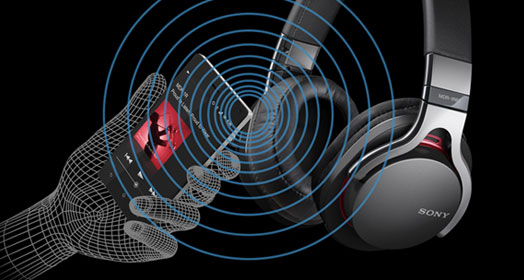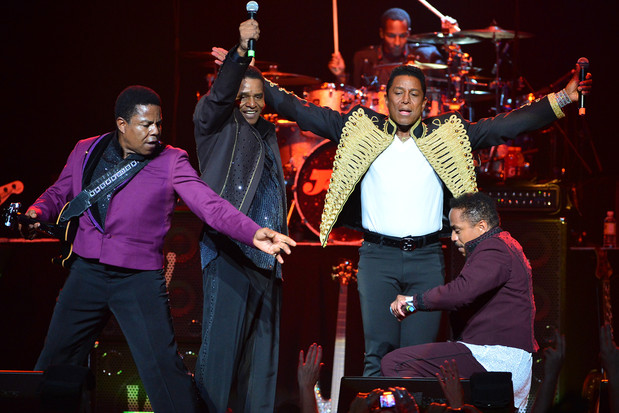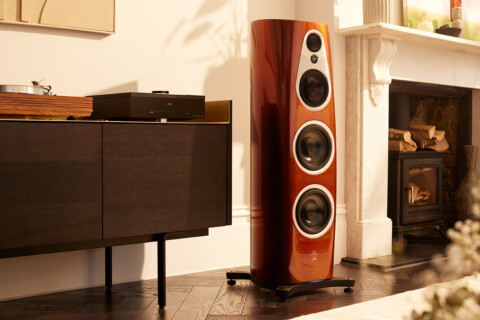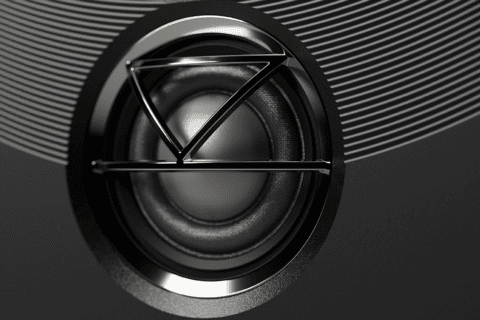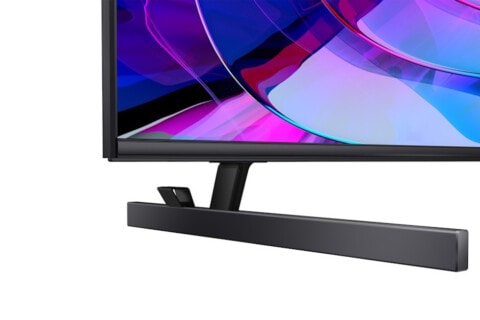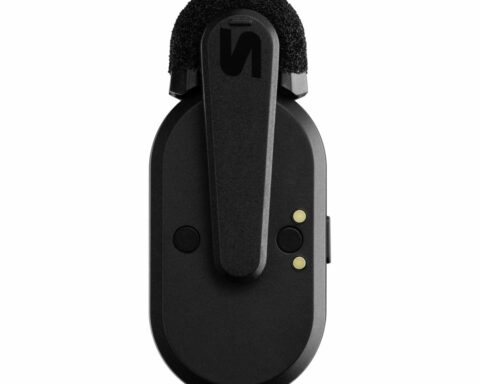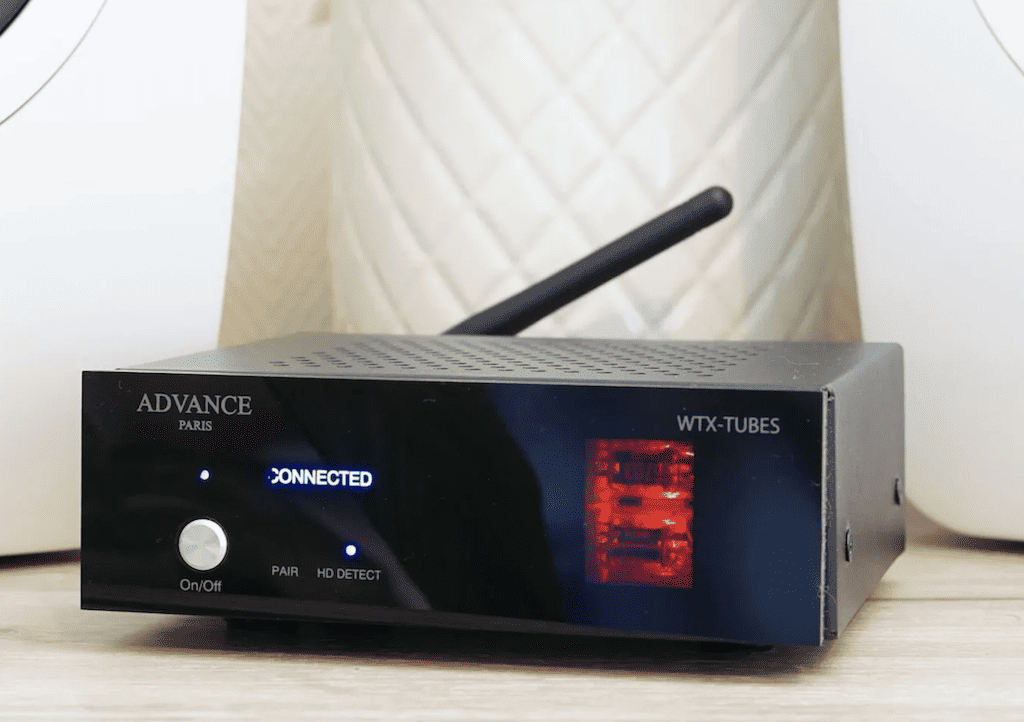$549
4 Stars
A headphone from Sony that provides the best of both worlds – wired and wireless
SONY’S MDR-1R HEADPHONES were recently reviewed in detail here, which makes this review of the MDR-1RBT model relatively straightforward, because the MDR-1RBT’s are the MDR-1R’s with Bluetooth and NFC connectivity. They look identical bar a few extra buttons, levers and switches.
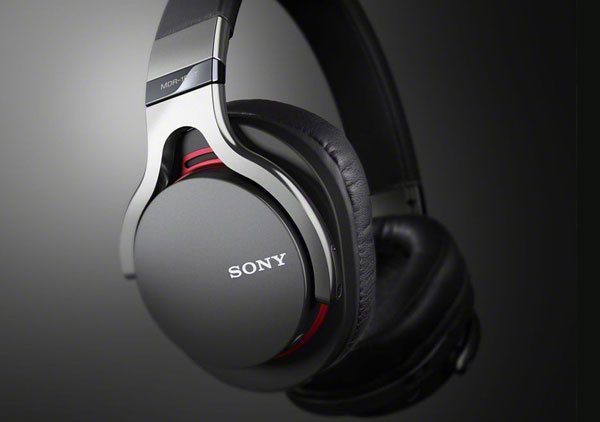 For information on the basic features, styling and construction of the MDR-1RBT’s, check out the review of the simpler wired version. There are a few extra bits and pieces built into the wireless version. There’s a battery hidden in there somewhere – a 3.6-volt lithium-ion rechargeable battery, to be exact, which is charged via a supplied Micro-USB cable. No charger is supplied but any USB connection or charger should suffice. Battery life is listed as being 30 hours of music or communication, and 200 hours on standby with a six hour recharge time.
For information on the basic features, styling and construction of the MDR-1RBT’s, check out the review of the simpler wired version. There are a few extra bits and pieces built into the wireless version. There’s a battery hidden in there somewhere – a 3.6-volt lithium-ion rechargeable battery, to be exact, which is charged via a supplied Micro-USB cable. No charger is supplied but any USB connection or charger should suffice. Battery life is listed as being 30 hours of music or communication, and 200 hours on standby with a six hour recharge time.
The MDR-1RBT’s are driven by one of Sony’s S-Master digital amplifiers. The amp is backed up by proprietary DSEE (or Digital Sound Enhancement Engine) technology, which is said to improve sound quality by “restoring high-frequency sound usually lost in compressed audio files”.
Dotted around the earcups are a power button, volume control, NFC on/off switch, red and blue LEDs, a phone remote button, a microphone, and a set of playback controls. So the MDR-1RBT’s are substantially more complex than the bare bones model. The weight has increased from 240 grams to 297 grams, which doesn’t sound like a lot but it’s noticeable, while not quite troubling, because they’re still a comfortable set of ‘phones. They no longer feel quite as svelte on the head, that’s all.
There’s a 3.5mm jack in the left earcup, hidden under a small plastic cover just like the Micro-USB port. So it’s possible to use them as a set of conventional wired ‘phones, but that defeats the point.
In Use
It doesn’t take long to get the hang of the MDR-1RBT’s controls, and adjusting volume, changing tracks or taking calls quickly becomes easy. Sony loaned me an Xperia S Android powered mobile phone to test the NFC connectivity, and the technology performed exactly as promised. Touch the ‘phones to the phone and they link up in an instant, bypassing any messing around with pairing the two devices. It’s worth noting that NFC or Near Field Communication is only a set of standards that allows compatible devices to set up communication, and in this case, the MDR-1RBT’s still use the Bluetooth A2DP protocol to stream music.
This means that the MDR-1RBT’s can be paired to any Bluetooth enabled smartphone, and pairing the ‘phones to my iPhone took moments (once I’d looked at the manual). Reconnecting the iPhone when I wanted to listen to music was simple enough, but the NFC hook-up to the Xperia-S was effortless, and preferred.
The Bluetooth range was about average, working perfectly with no dropouts in the same room, but starting to cut out around seven metres away, or if I whipped round a few corners.
Sound Quality
As usual, there’s a price to be paid for the convenience of going wireless. The sound quality via Bluetooth isn’t as good as it is on a wired connection to a phone, but then again, it never is.
There’s more detail when wired up, along with additional impact, slam and low frequency extension – basically, the MDR-1RBT’s sound exactly like the wired model when they’ve got a length of wire carrying the audio signal. Fortunately, they still sound pretty good through the Bluetooth connection, with zero hum or background noise. In sonic terms, this is definitely one of the best Bluetooth implementations I’ve encountered; perhaps that’s the DSEE in action. While there’s a sense that the streamed sound is slightly muddy and indistinct compared to the wired connection, it’s not to the detriment of the music in the context of portable audio. You generally wouldn’t be settling in for critical audiophile type listening when streaming, and in any event, the sound quality is high enough that you won’t feel terribly short changed by the streaming sound of the MDR-1RBT’s.
Conclusion
Some people will question the wisdom of spending an extra hundred bucks to take what is an excellent set of headphones and make them wireless. Others who appreciate the ability to dispense with a cable will feel that it’s a cheap price to pay. I have to say that after a week of wearing the MDR-1RBT’s around the house and not really even being aware of where my iPhone was, I realised that I fell into the latter category.
Forget about dragging a phone around and catching the cable on every protruding object, the wireless approach makes a lot of sense. If you want to hear just how much high fidelity the MDR-1RBT’s can bring to hi-fi (or if the battery is dead), then you just plug in the cable. Seems like the best of both worlds to me. ASHLEY KRAMER

